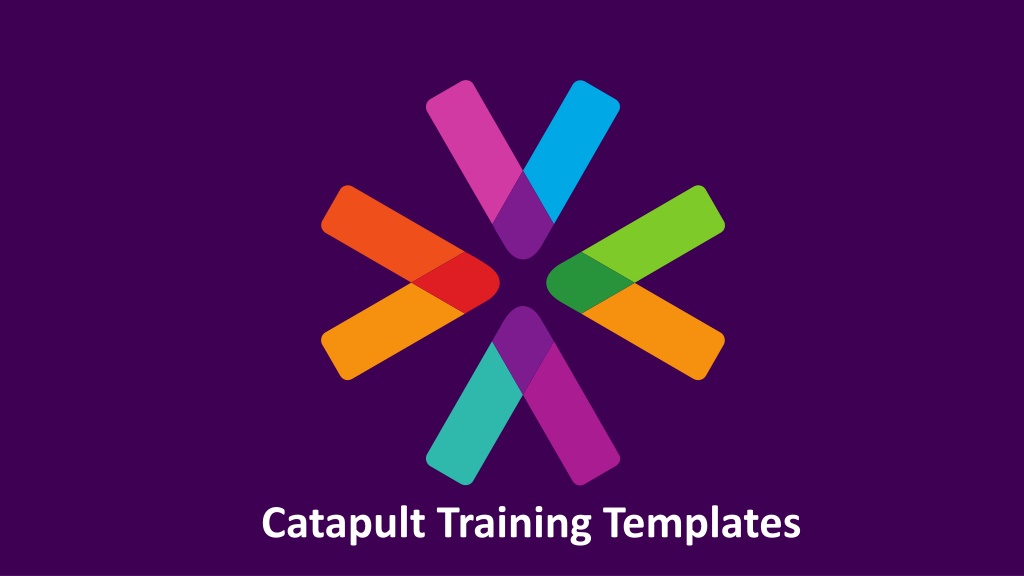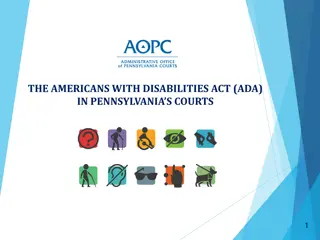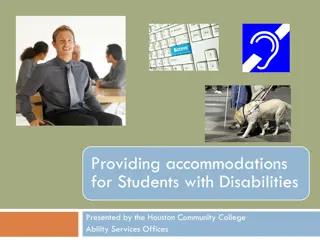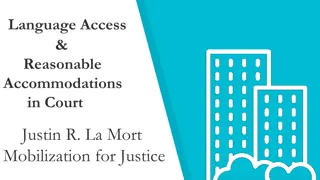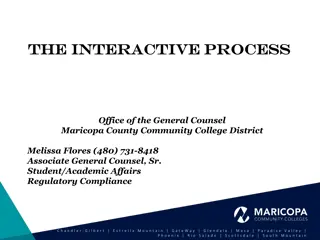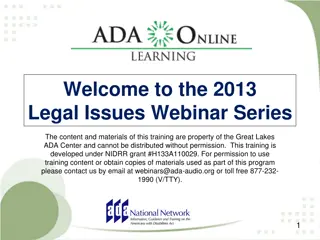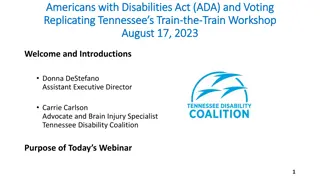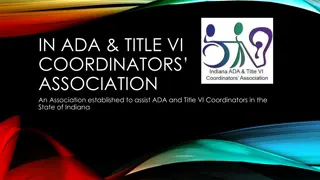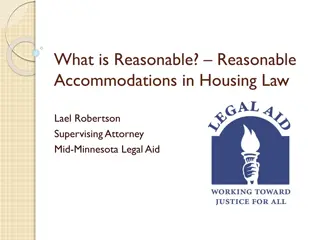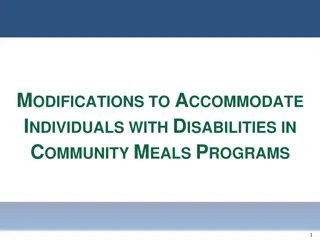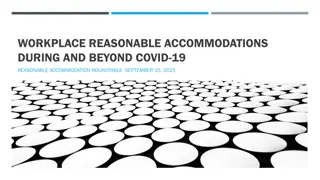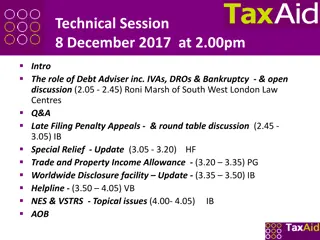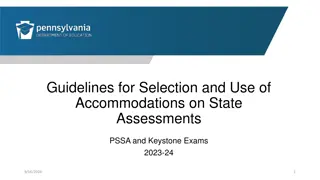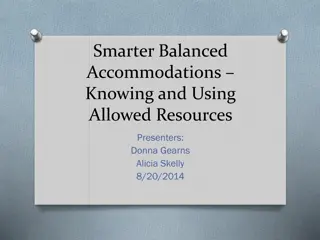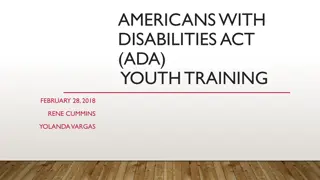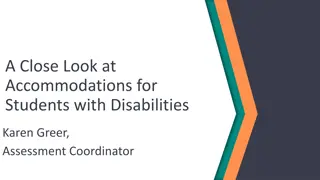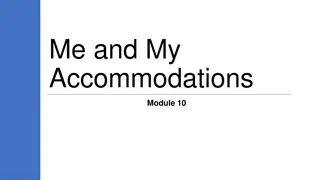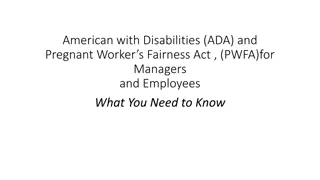Understanding ADA Compliance and Reasonable Accommodations
The content provides information on the Americans with Disabilities Act (ADA) and the responsibilities of supervisors and managers in accommodating employees with disabilities. It covers the definition of substantial impairment, the ADA overview, reasonable accommodations, and the interactive process involved in providing support. Supervisors are guided on recognizing accommodation needs, exploring solutions, and implementing necessary adjustments to help employees perform their job functions effectively. The importance of interactive discussions involving HR, healthcare providers, and other departments is emphasized to address undue hardships and ensure compliance with ADA regulations.
Download Presentation

Please find below an Image/Link to download the presentation.
The content on the website is provided AS IS for your information and personal use only. It may not be sold, licensed, or shared on other websites without obtaining consent from the author. Download presentation by click this link. If you encounter any issues during the download, it is possible that the publisher has removed the file from their server.
E N D
Presentation Transcript
Americans with Disabilities Act for Supervisors and Managers Subtitle Goes Here Location / Date / Goes Here
ADA Overview Qualified Employees/Applicants > Have or have record of having a substantial physical or mental impairment, or are regarded as having such an impairment. > Can perform the essential functions of the job with or without reasonable accommodation. Substantial Impairment Significantly limits or restricts a major life activity.
I TIME Who has a substantial impairment? A. Employee who has a migraine B. Employee feeling stressed C. Employee with a broken leg D. Employee with arthritis E. Who knows? Just call HR
ADA Overview Requires: > Medical information kept private > Limits medical inquiries & exams > No Discrimination/Retaliation > Reasonable Accommodation (as long as not an undue hardship)
Reasonable Accommodation > Goal: Interactive discussion to find a way to help the employee perform the essential functions of their job Facility changes (access) Supportive equipment/devices for job Accessible training materials/interpreters Modifying work schedule/More frequent breaks Remove a minor (NON-essential) job duty
Interactive Process 1. Recognize accommodation need 2. Gather information 3. Explore possible accommodations 4. Choose an accommodation 5. Implement
Interactive Discussion Human Resources Undue Hardship Other Depts Facilities/IT Employee Healthcare Provider Supervisor
I TIME What do you do... An employee has been coming into work late frequently. When you address this with them, they say that they are having a hard time making it to work on time because of medical treatments they are undergoing.
I TIME What do you do... >Your candidate for a programming role arrives for their interview with a sign language interpreter. You begin the interview and they state they are deaf but can generally read lips and they only use an interpreter occasionally.
Medical Exams/Inquiries > Employers may not ask job applicants about the existence, nature, or severity of a disability. > Applicants may be asked about their ability to perform specific job functions (generally ask of ALL candidates). > Any medical exams or questions: Clear with HR. Some are possible following an offer or after employment..
Drug and Alcohol Abuse >Illegal use of drugs/violating workplace drug rules are NOT covered by ADA. >Those seeking treatment or recovering addicts are protected.
FMLA & ADA Leave can be an ADA accommodation HR will assess. NEED FOR LEAVE1.FMLA? ASSESSMENT FMLA /OTHER ENDS ADA? Accommodate ADA Leave 2.OTHER? Hardship? 3.ADA?
I TIME What do you do... >Your employee asks if they can work from home because of anxiety, but they are in retail sales.
